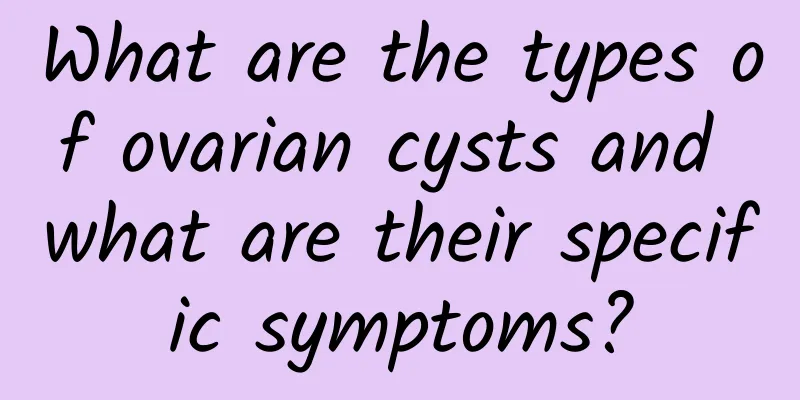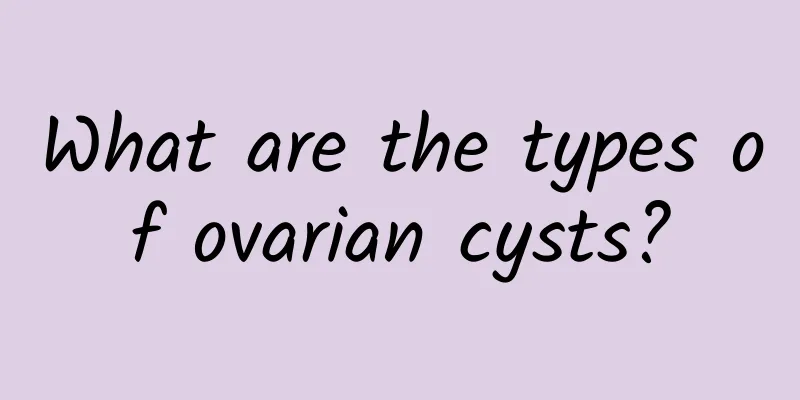What are the types of ovarian cysts and what are their specific symptoms?

|
Ovarian cysts are also a type of gynecological disease, also known as ovarian tumors, and are also a serious disease in the female reproductive organs. So what are the specific symptoms of ovarian cysts? What are the classifications of ovarian cysts? 1. Serous cystadenocarcinoma Ovarian cysts account for about 25% of benign ovarian tumors and are common in patients aged 30 to 40 years. They are mostly unilateral. The symptoms of this type of ovarian cysts are grayish white in appearance, smooth surface, mostly unilocular, thin cyst wall, and light yellow clear and transparent liquid in the cyst. In some cases, papillary protrusions can be seen on the inner wall, clustered or diffuse, which is called papillary serous cystadenoma. The papilla can protrude from the cyst wall, spread and grow on the surface of the cyst, and even invade adjacent organs. For example, patients with ovarian cysts accompanied by ascites have often undergone malignant transformation. 2. Mucinous cystadenoma Ovarian cysts account for about 15-25% of ovarian tumors and are most common in people aged 30-50 years. They are mostly unilateral. The symptoms of ovarian cysts are generally smooth surface, bluish white, multi-chambered, with lotus root starch-like mucus in the cysts. Occasionally, there are papillary protrusions in the cyst wall, which is called papillary mucinous cystadenoma. If the right cyst wall ruptures, tumor cells can be implanted on the peritoneum and the surface of the internal organs, producing a large amount of mucus, which is called peritoneal mucinoma. 3. Mature teratoma ovarian cysts are also called cystic teratomas or dermoid cysts. They account for about 10-20% of ovarian tumors and 97% of teratomas. Most of them occur in childbearing age. The tumors are mostly the size of an adult fist, with a diameter of less than 10 cm, mostly unilateral, and about 25% bilateral. They are round or oval in appearance. The symptoms of ovarian cysts are yellow-white, smooth surface, thick cyst wall, and single-chamber cross-section. The cysts often contain sebum and hair, and teeth, bones, cartilage and nerve tissue can also be seen, and thyroid tissue can occasionally be seen. The above are the specific classification types of ovarian cysts and the specific manifestations of ovarian cyst symptoms. I believe it will be helpful for everyone to understand ovarian cysts. If you have other questions about ovarian cysts, you can contact our online experts. Ovarian cysts http://www..com.cn/fuke/ncnn/ |
<<: What are the specific symptoms of vulvar leukoplakia?
>>: What are the specific symptoms of ovarian cysts?
Recommend
What are the situations in which you should go to the Department of Reproductive Immunology? There are these 6 situations
There are six main situations that require consul...
Is surgery necessary for uterine prolapse of degree 3?
Is surgery necessary for uterine prolapse of degr...
The harm of menopause can affect future generations
In life, many female friends are very sensitive w...
What will happen if there are too many miscarriages? What are the dangers of too many miscarriages?
Female abortion is becoming more and more common ...
3 ways to create a small buttocks: lift your legs and slim your buttocks
I often hear women complain: "My butt is too...
What is the difference between uterine fibroids and adenomyosis?
What is the difference between uterine fibroids a...
What is fluid accumulation behind the uterus?
The uterus is a very important part for women. Pr...
Adnexitis will make you unable to be a mother
Adnexitis is one of the most common diseases amon...
Symptoms of pelvic effusion during lactation
Symptoms of pelvic effusion during lactation: 42 ...
You can also get a six-pack while watching TV series at home! Learn these 3 tips to exercise without going out
During holidays, many people don’t want to go out...
Pay attention to the hygiene of the vulva after artificial abortion
After an artificial abortion, you must pay attent...
I was born with a hard time losing weight. I treated depression and lost 20 pounds in half a year.
Many women have tried all kinds of weight loss re...
Issues that require attention in diet after painless abortion
Painless abortion is a popular method among abort...
Can't eat cold food if you have premature ovarian failure?
Although premature ovarian failure is related to ...
When weight loss reaches a plateau! 2 Qi-boosting tea promotes metabolism and helps you lose weight faster
"I've been working out and controlling m...









